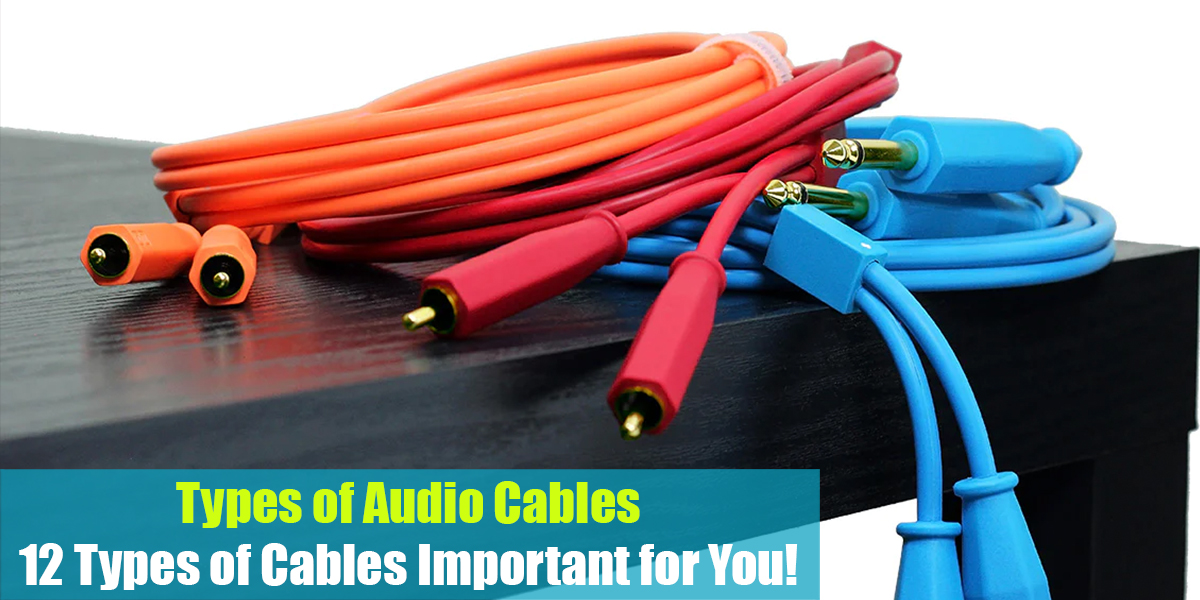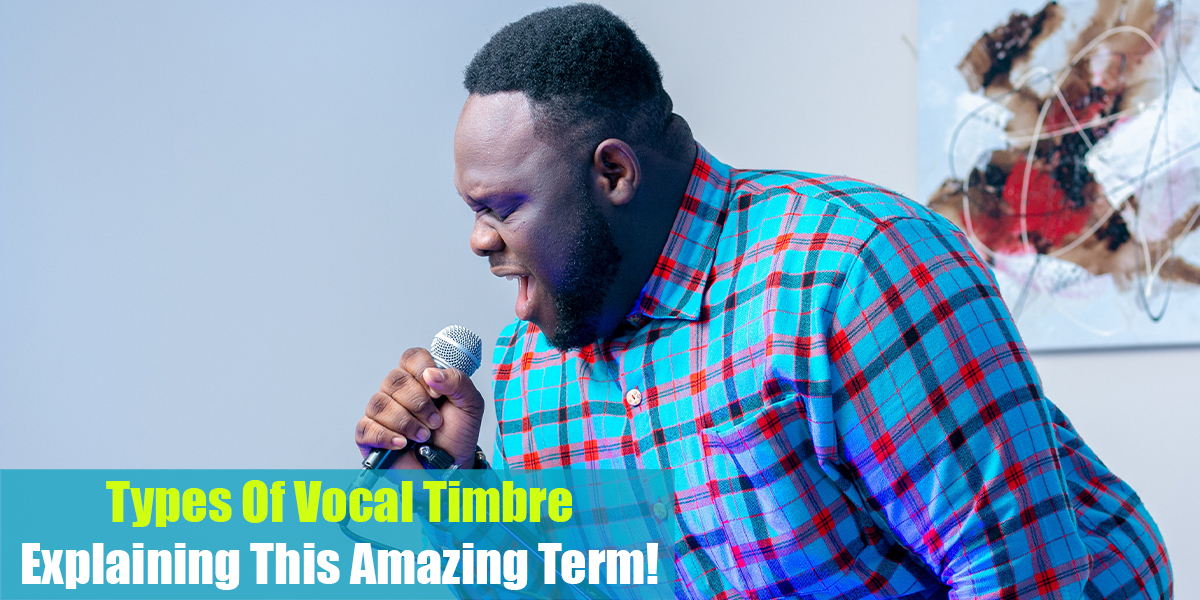EQing Electric Guitars
Introduction
The question of how to EQ an electric guitar has probably crossed the minds of aspiring recording engineers or musicians who wish to have even more control over their sound.
It is important to dial in the correct EQ at specific frequencies if you wish to attain a great sound from your electric guitar. The art of EQing is as much a science as it is an art, and it all starts with a simple understanding of basic EQ principles.
You will have an off sound even if you have the best guitar and sound equipment. If the EQ is not set correctly, you will have a distorted sound, and if you are a guitarist or sound engineer, you should know how to EQ electric guitar.
Getting a good electric guitar sound is not as simple as it sounds, and while several factors can play a crucial role, the ones we are going to cover are the most important ones. A mistake in any of these areas will result in a poor-sounding guitar.
In this article, we will discuss the best techniques for EQing your electric guitar, setting it up for further processing, and blending it with the other elements of your song. We will now move directly into the topic without further introduction.
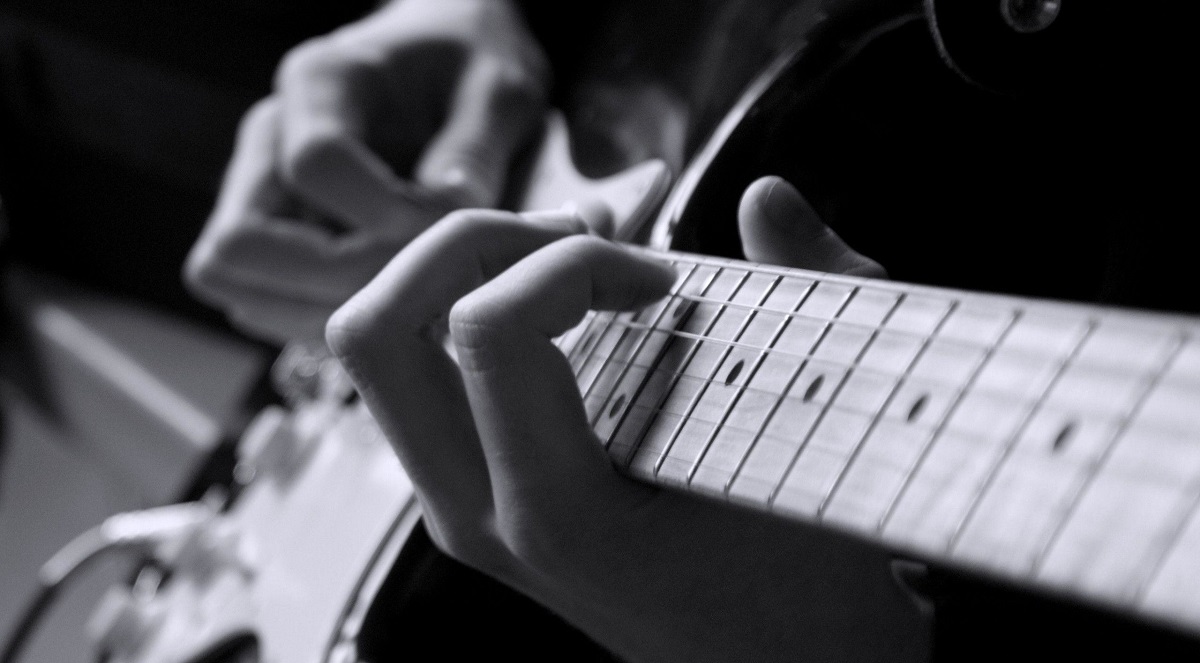
Electric Guitar Fundamental Frequencies
There are some elementary and fundamental areas of all instruments you should pay attention to, regardless of how they are recorded. The purpose of this blog post is to provide an overview of EQing the guitar, not recording. Let’s begin with the basics of EQ once that has been sorted out.
Depending on how low you tune your bottom string, the frequency range of an electric guitar recorded with an amplifier can range anywhere from 80Hz to around 4.5kHz. Obviously, if you examine a frequency analyzer closely, you will see that there is a large amount of frequency content above 4.5kHz, yet most of this content does not apply to electric guitars.
Fizz constitutes the majority of frequency content above 7kHz, particularly when distorted electric guitars are present. Most of the time, you’ll want to focus on the low midrange for rhythm guitars, anywhere between 150 and 500Hz, and anywhere between 3 and 5kHz for lead guitars, especially if you want them to cut through a dense mix.
Our suggestion at this point is to get familiar with all the fundamental areas of the instruments you are using in your genre. Familiarize yourself with how they appear in the frequency spectrum in order to get rid of the unwanted frequencies and end up with a good sound for your instruments.

EQing Low Frequencies
Low frequencies, such as those below 80-90 Hz, are not well represented by electric guitars. By not cutting those frequencies, there is a high possibility that you will end up with an incoherent and muddy mix.
It is generally accepted that all of the bass frequencies of an electric guitar fall within the range of 100-150 Hz. The problem is that these frequencies will clash with the frequencies of a bass guitar.
Therefore, if you are seeking a guitar with a powerful low-end and clear bass, you will have to compromise between these two instruments. The majority of the time, a narrow cut around 100 Hz and a slight boost between 100 and 150 Hz will be sufficient to achieve the desired result.
Adding automation to your EQ is another neat trick you can implement. If you automate your electric guitar, you can boost the low frequencies whenever the guitar is soloed and decrease them whenever the bass guitar is played. There is no reason to cut those frequencies if there is no bass guitar, so you may as well boost them to emphasize the depth of the music.
Taking out the low-end frequencies with a high pass filter is due to the fact that the fundamental frequencies of an electric guitar lie between 82.4Hz and 1174.6Hz. All harmonics are not taken into account in these calculations. As a result, it is recommended that you eliminate anything below 80-100Hz when setting EQ for an electric guitar.
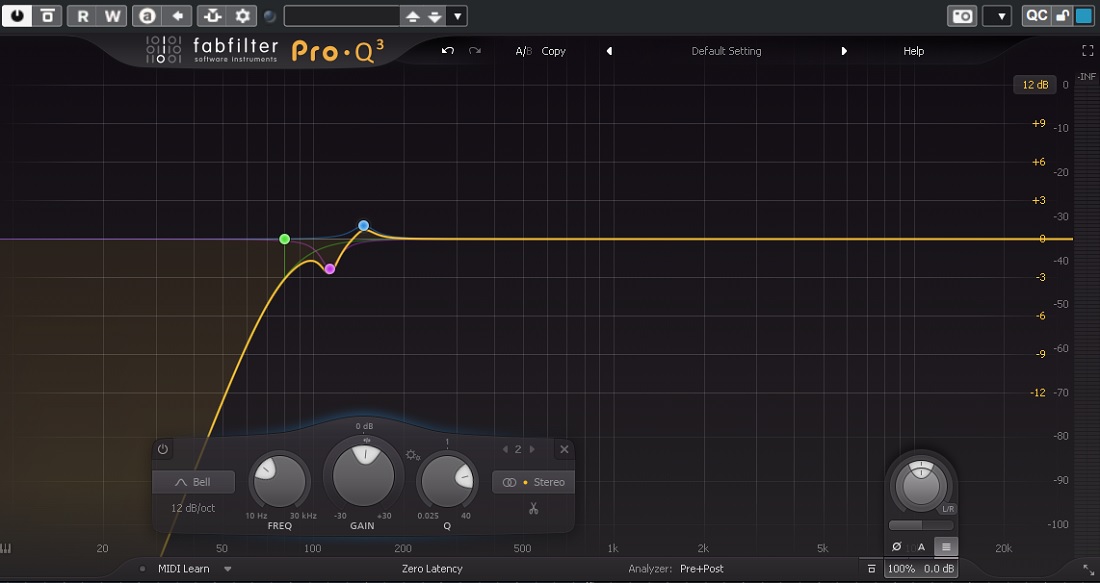
EQing Mid-Range Frequencies
It is common for mud to lie between 250Hz and 350Hz. The sound of your mix can be flat and lifeless if you have too much mud in it. For a bit more clarity, you might want to cut this area based on the guitar recording.
This area should be cut with caution, however. It’s common for mixers to make deep cuts to create mix clarity, but they don’t realize they’re removing all of the guitar‘s body and life in the process.
Bandpass filters are used to remove the frequency of the resonance of electric guitars, which is approximately 600 Hz. It is possible to reduce and cut out this chosen frequency spectrum using a bandpass filter with a center frequency of 600Hz.
With a digital mixer, reducing this range of frequencies is relatively simple as you can use a peaking or bell equalization filter, also called a bandpass filter, set within this range of frequencies. In order to begin, locate the 600Hz frequency and gradually decrease it. The mixer’s screen will also display a slight reduction in adjacent frequencies below and above 600 Hz.
Due to the fact that the 600Hz frequency is used as the center frequency of the digital mixer as it is lowered, this occurs. The goal is to slightly decrease the center frequency, as this will also result in a slight reduction in the range of frequencies surrounding the center frequency, thereby rounding off the sound, which is excellent for the final product.
So besides cutting frequencies in the mid-area, you will be able to find the basic guitar tone here that you want to enhance. Oftentimes, it is placed between the mud and the resonance, so you will need to be very precise and find the correct sound. So a slight boost somewhere between 300Hz and 600Hz will result in the body of the guitar that gives a signature sound to the instrument.
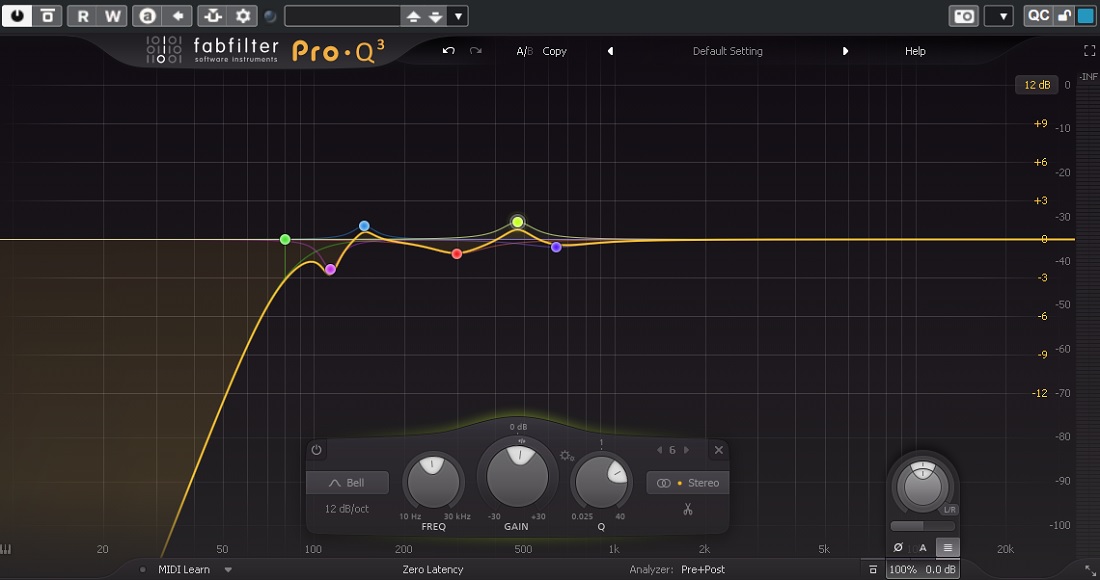
EQing High Frequencies
There is a noticeable sound between 1-2 kHz, which is normally produced by the pick. In light of that, you might want to consider cutting those frequencies unless you want a very raw and realistic sound. In this same band, there are also harsh and unpleasant frequencies that can be heard in guitar sounds. To suit your own ears and tastes, boost or cut.
If your guitars are distorted, you might want to boost somewhere around 5 kHz in order to add presence to different frequencies, but be careful since these frequencies might already be emphasized if you boost somewhere around 5 kHz. It should also be noted that these frequencies might conflict with the overheads of drums. Therefore, you must choose what is most important to you.
The electric guitar might sound better with the boost of around 10 kHz, but again, if your guitar is distorted, you might not want to do this. The frequencies above 15 kHz are probably not that useful, but most people probably can’t hear them anyway, so you can use low pass filters to tame them down.
Be very careful with the high-end frequencies and focus mostly on the frequency ranges that are known for the guitar. Heavily distorted guitars will not benefit from huge boosts in the high area. Maybe that is better for acoustic guitar recording, but not when you mix electric guitars.
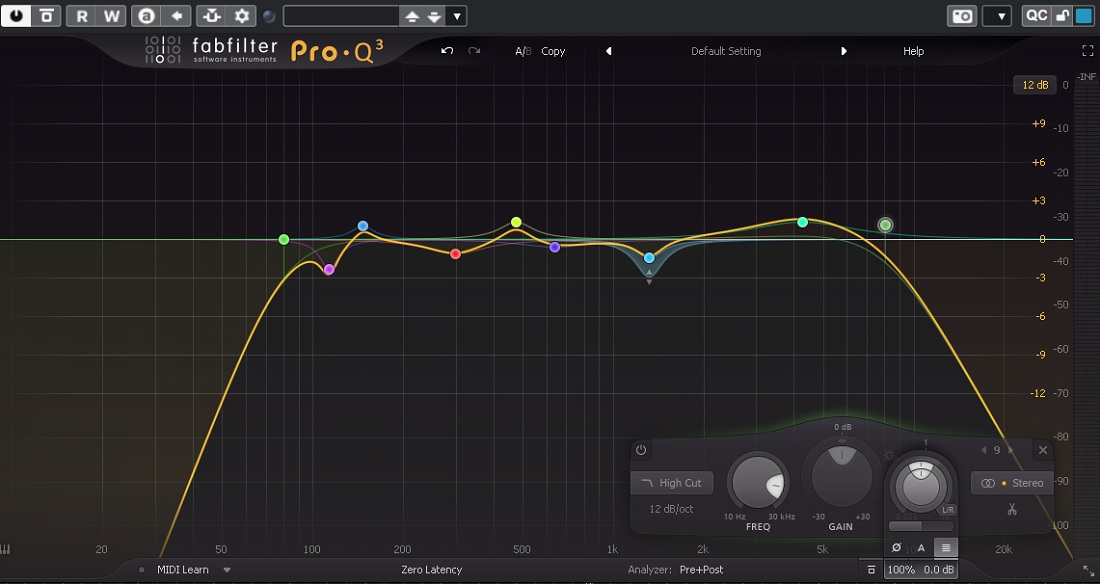
EQing Electric Guitar Solos
As with lead guitar lines, there are several options for solos, but you can also take a different route. The percussive attack of the guitar pick on the strings is amplified when some of the highs are boosted, especially between 3 kHz and 4 kHz.
It is very sensitive to human hearing in that range, so even small boosts may make things sound louder. To add a glossy sound to solos played on guitars equipped with humbuckers, you can boost a bit higher up further, around 5 kHz.
EQing the Lead Guitar
Any song can be made classic by a perfect lead guitar riff, but how those riffs sit in the mix is greatly influenced by EQ. To increase bite, you can boost the highs around 2 kHz to 5 kHz instead, but if you’re using a clean tone, you might consider increasing the 150 Hz to 300 Hz to improve warmth.
As well, if you have a distorted tone, you can boost between 400 Hz and 1000 Hz to get a crunchy effect, or you can boost the super highs up to 6 kHz to get a sizzling, almost fizzy sound. To make sure boosting one area does not cause problems in another, you should use multiple types of EQ if possible.
Use Saturation Plugin
High frequencies can be tamed sometimes with saturation. Rather than using an EQ, you could use a saturation plugin. If you want to experiment and sway away from the regular usage of the EQ plugin or hardware, this is the way to go.
You’ll be able to tame those harsh-sounding electric guitars (wiry Stratocasters are a good example) while adding some nice harmonic content to your sound with tape or tube saturation. Compared to an EQ cut, this is a richer solution that will make your mix sound better.
Besides the technical points that the saturation can fix, you also will end up with a rounder and richer sound that will certainly benefit the final outcome of the sound. Experiment and try it out.
Conclusion
The electric guitar EQ process is something that needs to be paid very close attention to since mixing electric guitars is a craft by itself and you are actually working on a signal that is the leading one in your song.
Not messing this part up means that you will have an easier mixing process afterward where you need to fit in the rest of the elements in the song. The ultimate goal is to make the guitar sit nicely with other instruments in the mix and to bring the guitar upfront and in the listener’s face.
So even though this article is brief, we covered all the basic details of when you need to EQ the electric guitar in the mixing process. We will cover a different article on recording a guitar, where we will talk about amps, mic placement options, and other stuff.
In case you are having any questions about this topic here, please let us know in the comment section below and we can look into it together and end up with a better understanding of the task.
Best Mastering Equalizers: Shape Your Final Frequencies!
Best 500 Series Equalizers: Top 10 Models To Shape Your Frequencies!
Bettermaker Stereo Passive Equalizer Review: New Pultec-Style Equalizer!
Heritage Audio Motorcity EQualizer Review: Amazing 7-band Mono Passive EQ!
API Select SV14 Review: Great New 500 Series EQ from API! (2023)

